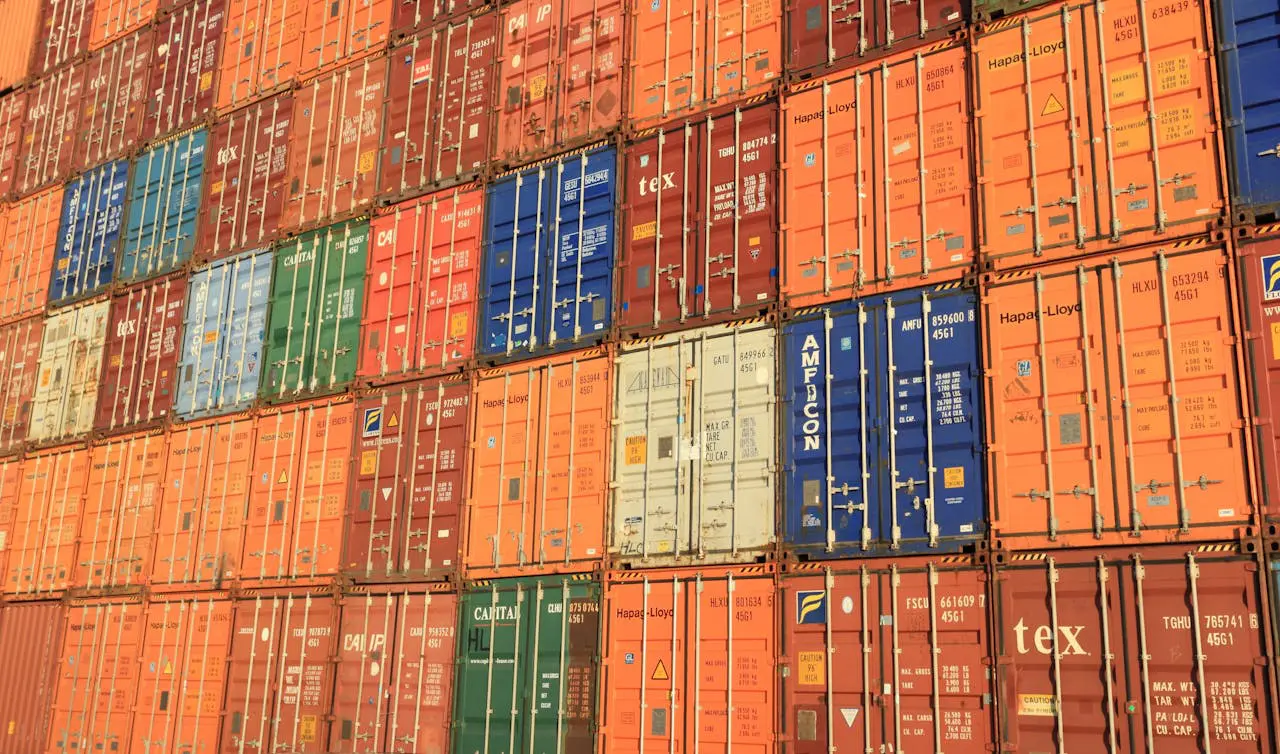Imagine a river choked with debris, where every return you process adds to the flow of waste. You know that returns management can significantly impact sustainability, yet many overlook how their choices ripple through the environment. What if you could turn that tide by adopting smarter practices? By focusing on eco-friendly strategies, you not only reduce your carbon footprint but likewise align with a growing consumer demand for sustainable options. Understanding the complexities and benefits of this shift could reshape your approach, but where do you start?
The Importance of Sustainable Returns Management
While many might overlook the significance of returns management, it plays a critical role in eCommerce sustainability. You mightn’t realise that returns contribute to around 5 billion pounds of waste in US landfills each year. By implementing sustainable returns practices, you help reduce this staggering figure and promote ethical sourcing within your supply chain.
Consumer behaviour is shifting; 66% of shoppers are willing to pay more for brands that prioritise sustainability. This means that adopting sustainable returns isn’t just good for the environment—it can improve brand loyalty and customer satisfaction as well.
By optimising your reverse logistics, you can minimise carbon emissions and packaging waste, aligning your operations with industry standards that demand eco-friendly solutions.
Encouraging exchanges instead of outright returns can significantly impact waste reduction. As you refine your returns management, you contribute to a circular economy that resonates with the growing demand for eco-conscious choices.
Ultimately, focusing on sustainable returns management not only addresses environmental concerns but also positions your brand as a leader in responsible eCommerce, elevating your reputation in a competitive marketplace.
Key Components of Sustainable Returns
When it comes to sustainable returns, eco-friendly packaging solutions and optimised reverse logistics processes play essential roles.
You can significantly reduce waste and carbon emissions by choosing materials that are recyclable or biodegradable.
Streamlining your reverse logistics not only cuts costs but also improves your overall sustainability efforts.
Eco-friendly Packaging Solutions
As you investigate eco-friendly packaging solutions, you’ll find that adopting biodegradable and recyclable materials is crucial in reducing the environmental impact of returns. Using biodegradable materials not only minimises waste but likewise aligns with consumer expectations for sustainability.
Integrating minimalistic designs can further streamline your packaging process, cutting down on material usage while enhancing the overall customer experience. These designs not only look good but additionally simplify returns, making them easier for customers.
Encouraging the use of reusable packaging, like returnable boxes, can significantly minimise single-use waste and promote eco-friendly habits among your consumers. This approach cultivates a culture of sustainability, turning your customers into active participants in the process.
Implementing packaging take-back programs is another effective strategy. These initiatives allow you to recycle packaging materials, reduce landfill contributions, and support circular economy efforts.
Finally, collaborating with suppliers focused on sustainable practices guarantees that your packaging solutions are eco-friendly from the ground up. By working together, you can create a more sustainable returns management system that benefits both your business and the environment.
Optimised Reverse Logistics Processes
To create a sustainable returns management system, optimising reverse logistics processes is vital. By focusing on return processing efficiency, you can significantly reduce the carbon footprint associated with returns, which often account for up to 60% of the original product price in reverse logistics costs.
Implementing centralised return centres streamlines processing and minimises transport emissions, improving overall efficiency.
Utilising data-driven insights to identify return trends allows you to address root causes effectively. This knowledgeable decision-making not only improves supply chain efficiency but also supports waste reduction strategies that are fundamental for sustainable operations.
Furthermore, collaborating with third-party logistics (3PL) providers who specialise in eco-friendly practices can further improve your reverse logistics efforts, promoting circular supply chains.
Logistics network optimisation plays a significant role in reducing operational costs and waste. By continuously improving your reverse logistics processes, you align your business with broader sustainability initiatives, meeting consumer expectations for responsible practices.
Embracing these strategies not only benefits the environment but also nurtures consumer trust and loyalty, ensuring a more sustainable future for your returns management system.
Role of Technology in Returns Management
Integrating technology in returns management not only streamlines processes but furthermore improves the overall customer experience. By adopting returns automation platforms, you can efficiently handle return requests, ensuring that each return is processed accurately, whether it results in a refund or a donation. This automation cuts down on manual errors and speeds up the return process, making it hassle-free for your customers.
Leveraging predictive analytics through AI and machine learning helps you anticipate return patterns, allowing for better inventory management and waste reduction. With data optimisation, you can identify return trends and their root causes, ultimately refining your supply chain efficiency.
In addition, technology plays an essential role in improving reverse logistics. By enhancing tracking and management of returns, you can significantly reduce carbon emissions associated with transportation and processing. This not only supports sustainability efforts but also builds consumer trust in your brand.
When your returns management is efficient and eco-friendly, it improves the overall customer experience, encouraging loyalty and positive word-of-mouth. Adopt technology to create a seamless return process that aligns with your sustainability goals.
Communicating Sustainability Efforts to Customers
When you clearly communicate your return policies, you build trust with your customers and highlight your commitment to sustainability.
Engaging marketing initiatives can showcase your eco-friendly practices, making it easy for customers to see their positive impact.
Clear Return Policies
Clear return policies play a crucial role in shaping customer expectations and cultivating trust, especially in an era where consumers are increasingly concerned about sustainability. When you provide return policy clarity, it helps align with consumer expectations, making them feel secure in their purchases. In fact, 67% of consumers check return policies before buying, so your policy can significantly influence their decisions.
Transparent communication strategies about your return policies can act as trust-building measures. Since 76% of Americans might switch brands for carbon offsetting, highlighting your eco-conscious practices can make a difference. Educating customers about the sustainability efforts tied to your returns can empower them, promoting conscious commerce.
Moreover, clear return policies help manage the roughly 30% return rate typical in e-commerce, which often leads to increased waste and carbon emissions. By clearly communicating your sustainable practices within these policies, you can meet the growing demand for eco-friendly shopping.
Engaging Marketing Initiatives
A transparent return policy not only builds trust but similarly sets the stage for engaging marketing initiatives that spotlight your sustainability efforts.
By integrating brand storytelling into your strategy, you can share your commitment to eco-friendly practices and highlight the significant environmental impact of returns management. For instance, reminding consumers that 5 billion pounds of returned goods end up in US landfills can resonate strongly with eco-conscious shoppers.
Utilising social media strategies can further improve consumer engagement. Create campaigns that educate your audience on the importance of minimising returns and opting for exchanges instead. This not only drives conscious purchasing behaviour but also nurtures a community around your brand’s sustainability mission.
Incorporating clear eco-friendly messaging about your commitment to reducing waste and improving reverse logistics can boost marketing transparency and build brand loyalty.
Research shows that 66% of consumers are willing to pay more for sustainably produced items. By positioning your brand as a leader in sustainability, you attract customers who prioritise eco-friendly practices and are enthusiastic about supporting companies that align with their values.
Benefits of a Sustainable Approach
While many businesses may overlook the impact of returns management on sustainability, adopting an eco-friendly approach offers significant advantages. By implementing efficient reverse logistics processes, you can reduce the environmental impact associated with transportation and packaging waste from returns. This not only improves your inventory management but likewise cuts down on the return frequency, minimising the overall carbon footprint.
Today’s consumers increasingly prioritise sustainability, with 66% willing to pay more for eco-friendly practices. By aligning your returns management with these consumer preferences, you can strengthen your brand reputation and cultivate customer loyalty.
In addition, utilising returns data to identify trends allows you to improve product quality. Since about 75% of returns are within your control, addressing these issues can lead to fewer returns and a more sustainable product lifecycle.
Moreover, a sustainable approach can significantly reduce landfill contributions, as many returned goods are in like-new condition. This proactive strategy not only promotes environmental responsibility but can also translate into cost savings, optimising reverse logistics that otherwise account for up to 60% of the original product price.
Embracing sustainability in returns management is both a smart business move and a commitment to the planet.
Supporting a Circular Economy
Supporting a circular economy in returns management not only improves sustainability but furthermore creates new revenue streams for your business. By optimising your reverse logistics processes, you can recover value from returned products while minimising waste.
Did you know that around 5 billion pounds of returned goods end up in US landfills annually? Implementing resale programs for returned items can significantly contribute to waste reduction, especially since nearly 30% of returned products are often in like-new condition.
Collaboration with waste management partners boosts your sustainability efforts. Research shows that two-thirds of consumers are willing to pay a premium for sustainably produced items. By aligning with their preferences, you can increase sales through sustainable sourcing.
Utilising returns data helps you identify product quality issues and inefficiencies, leading to better decision-making. This not only reduces return rates but also encourages more sustainable consumption patterns.
Encouraging donations of returned goods to charities can further extend the product lifecycle, benefiting your community and diverting waste from landfills.
Challenges in Implementing Sustainable Returns
Implementing sustainable returns can feel like a balancing act between costs and convenience.
You might find that investing in eco-friendly processes often comes with higher upfront expenses, which can be tough to justify.
At the same time, customers expect hassle-free returns, making it crucial to strike a balance that meets both sustainability goals and consumer demands.
Costs and Investment Requirements
As retailers strive to adopt sustainable returns management, they often encounter significant upfront costs that can deter smaller businesses from making the leap. Conducting a thorough cost analysis is crucial, as it helps you understand the investment strategies needed to upgrade technology and infrastructure.
You might find that optimising reverse logistics processes requires training staff and implementing new systems, which can escalate expenses.
Furthermore, financial forecasting becomes challenging when balancing the costs of sustainability against the potential reduction in return-related waste. While eco-friendly packaging solutions and donation programs for returned goods can align with your sustainability goals, they may likewise burden your budget allocation in the short term.
The key is to recognise that the lack of immediate financial return on these investments shouldn’t dissuade you. Instead, consider that improving return statistics through sustainable practices can boost brand loyalty and consumer trust over time.
Balancing Sustainability with Convenience
While many consumers crave quick and hassle-free returns, this demand often clashes with the need for sustainable practices in returns management. With about 30% of online purchases being returned, the carbon emissions and waste from transportation and packaging can be significant.
You might expect seamless return policies, but the push for sustainability often requires more processing time for evaluating resale viability or sorting items for donations.
Balancing consumer expectations and environmental awareness can feel like a tightrope walk. Retailers may hesitate to adopt eco-friendly packaging innovations or local return options because of increased complexity and costs.
Plus, many shoppers don’t realise the environmental impact of their returns, leading them to expect items to be restocked immediately.
Encouraging exchanges instead of outright returns could be a solution, but it creates convenience trade-offs that might frustrate customers.
Educating consumers about the benefits of sustainable practices is essential. By raising awareness, you can help bridge the gap between convenience and eco-consciousness, nurturing a culture that values both quick solutions and sustainable choices in returns management.
Future Trends in Sustainable Returns Management
With the rise of eCommerce, future trends in sustainable returns management are set to transform how retailers handle product returns. You can expect predictive analytics powered by artificial intelligence and machine learning to become more prevalent, allowing retailers to anticipate and reduce return rates effectively. This technology won’t only streamline processes but also promote more sustainable practices.
Furthermore, the adoption of virtual fitting rooms will address size-related returns, significantly reducing one of the leading causes of product returns in online shopping. As retailers increasingly adopt circular practices, you’ll see a growing focus on recycling and reselling returned items, minimising waste while maximising the product lifecycle.
Collaborations between retailers and logistics providers will enable more efficient reverse logistics solutions, ultimately lowering carbon emissions. You’ll also see the expansion of resale opportunities, where retailers can recapture value from returned products while promoting sustainability initiatives.
Conclusion: Paving the Way for a Greener Future
Sustainable returns management is no longer just an option; it’s a necessity for eCommerce businesses looking to thrive in a competitive market. With 9.5 billion pounds of products ending up in U.S. landfills, the urgency to adopt eco-friendly return policies has never been greater. By implementing efficient reverse logistics, you can significantly cut down on the carbon footprint associated with returns, addressing both consumer behaviour and environmental impact.
Furthermore, focusing on packaging innovation can further improve sustainability. Eco-friendly packaging not only reduces waste but similarly resonates with the 76% of consumers willing to switch brands for greener practices. This commitment can nurture brand loyalty, as 66% of consumers are ready to pay a premium for businesses thatprioritisee sustainability.
Educating your customers about these initiatives empowers them to make more conscious purchasing decisions, ultimately leading to lower return rates.
As you pave the way for a greener future, remember that integrating sustainable practices into your returns management isn’t just good for the planet; it’s likewise a smart business move that aligns with evolving consumer expectations. Welcome this change, and you’ll be well-positioned for success in a rapidly changing market.
Conclusion
In embracing sustainable returns management, you’re not just reducing waste; you’re joining a movement toward a greener future. Isn’t it time we all take responsibility for our planet? By prioritising eco-friendly practices, you can improve customer satisfaction and set your brand apart as a leader in sustainability. Together, we can transform the returns process into an opportunity for positive change, proving that responsible shopping and environmental stewardship go hand in hand. Let’s pave the way for a better tomorrow!





